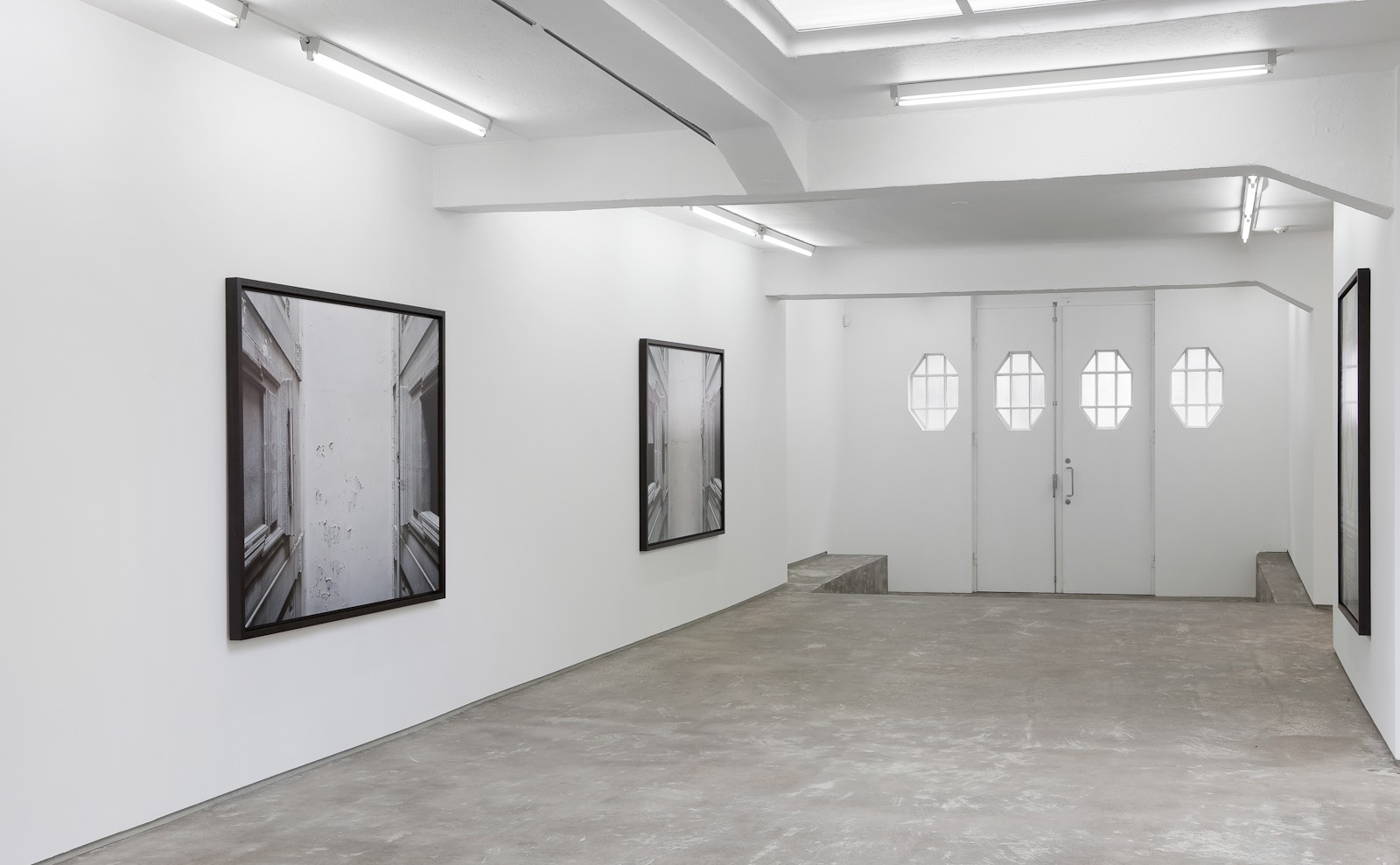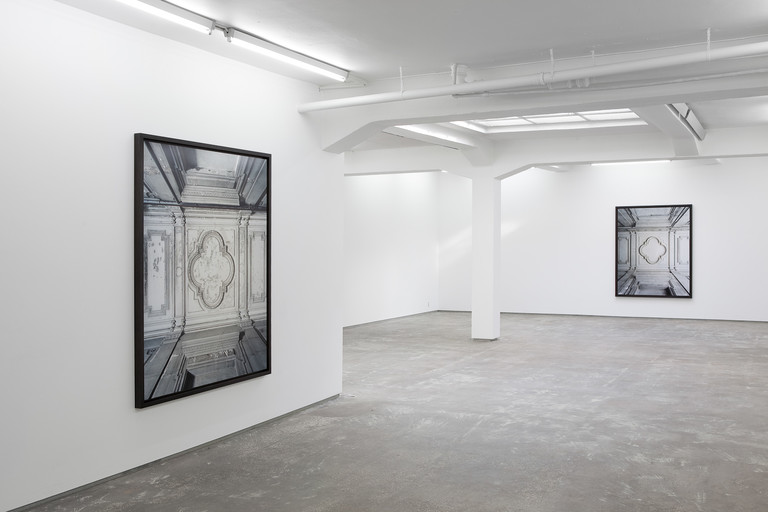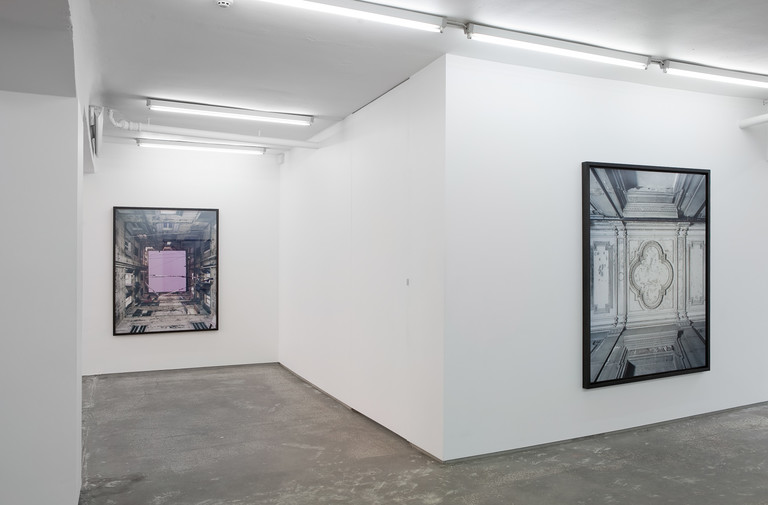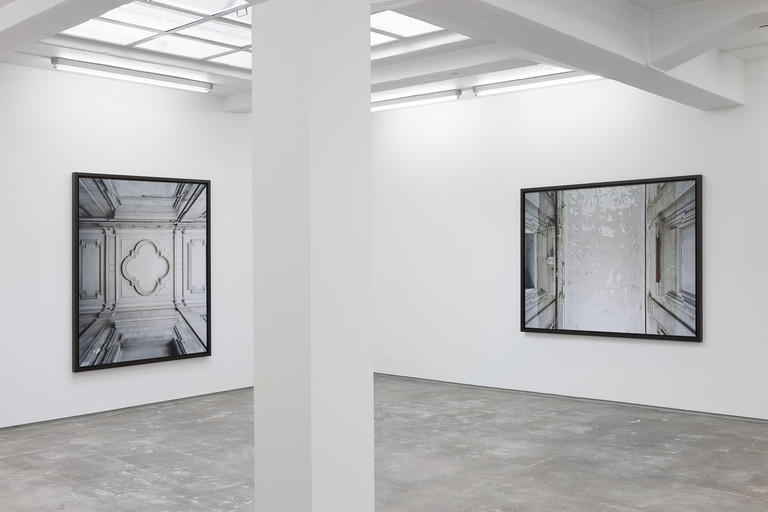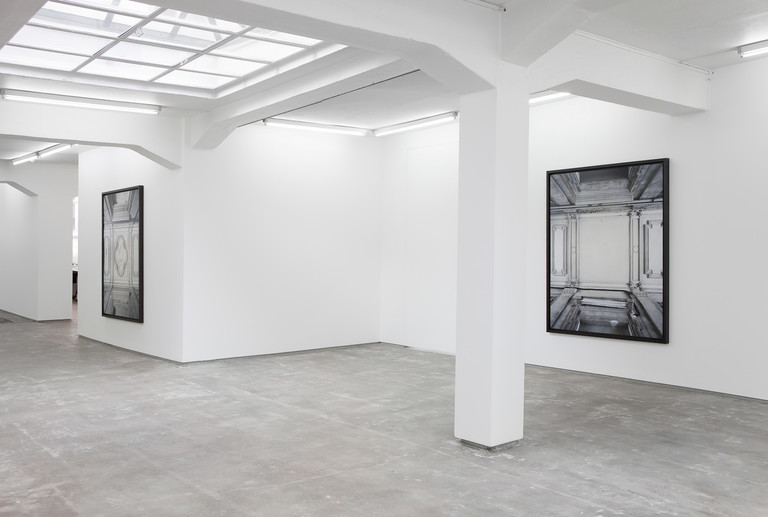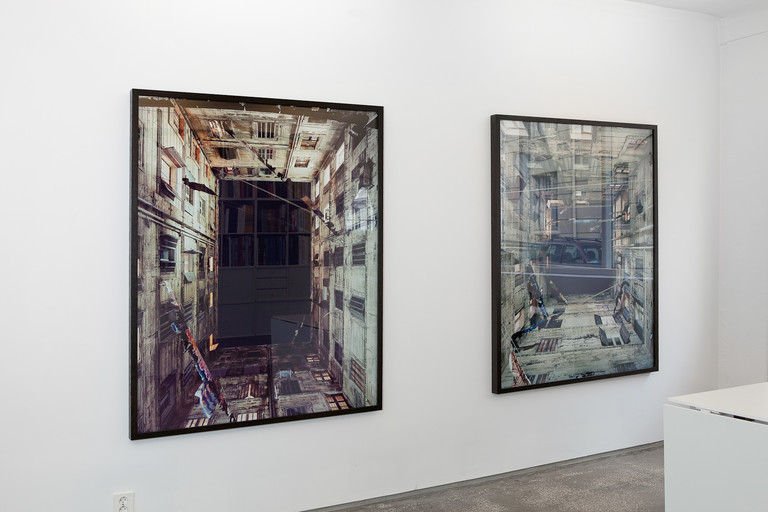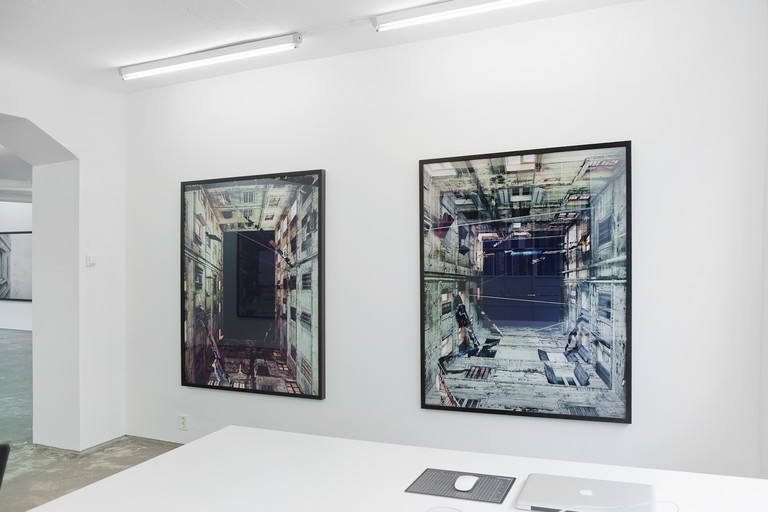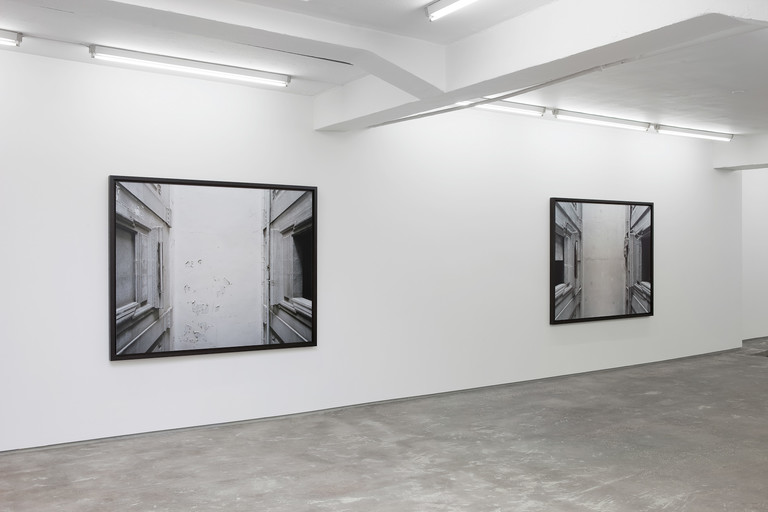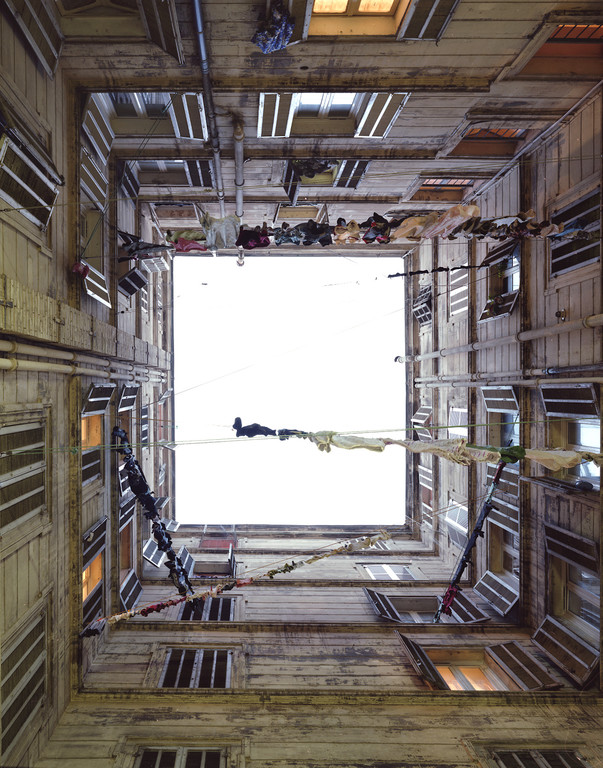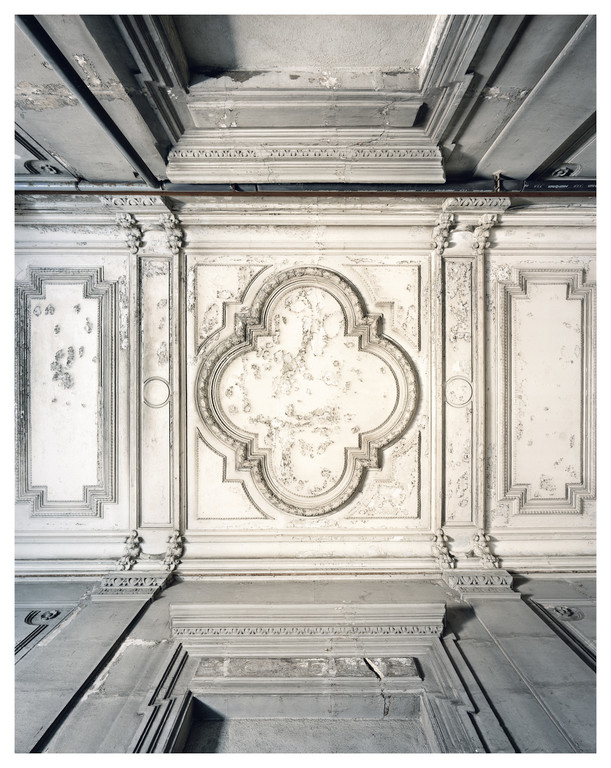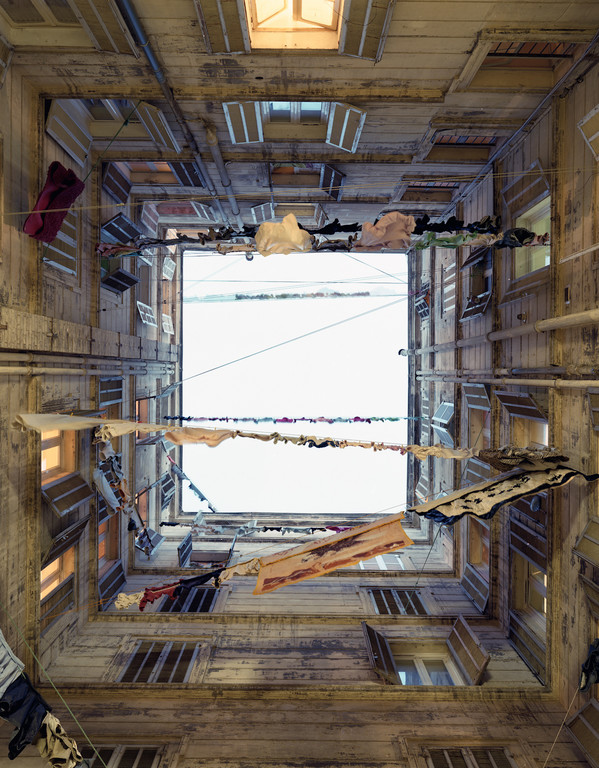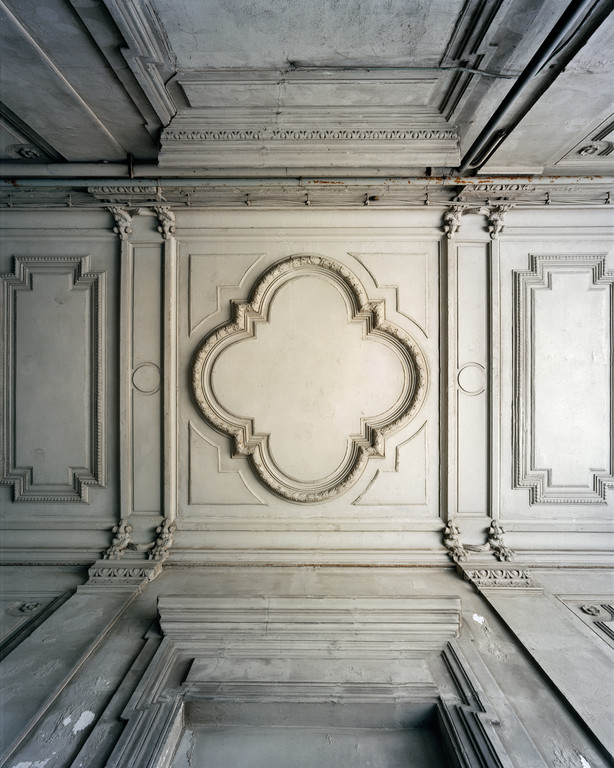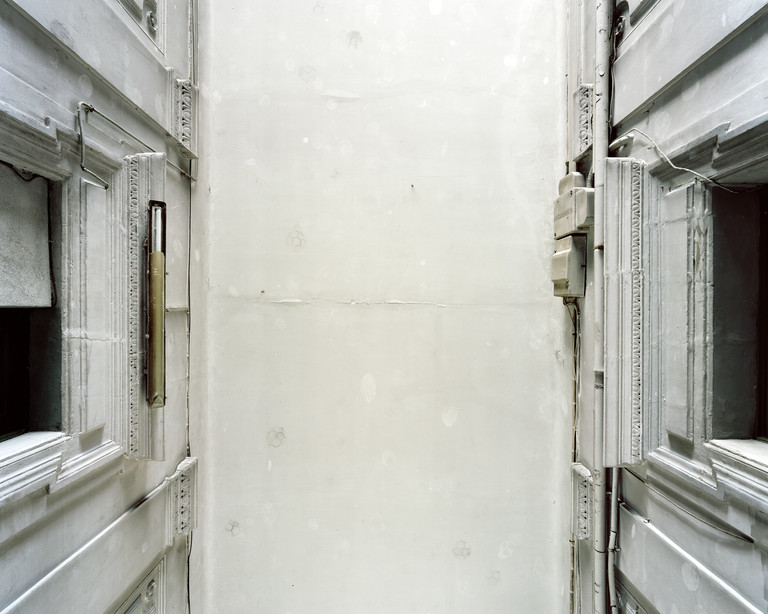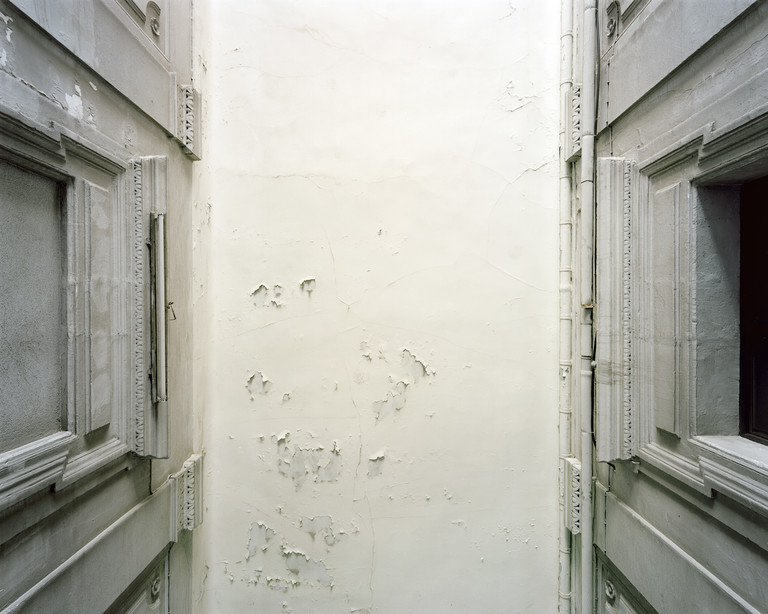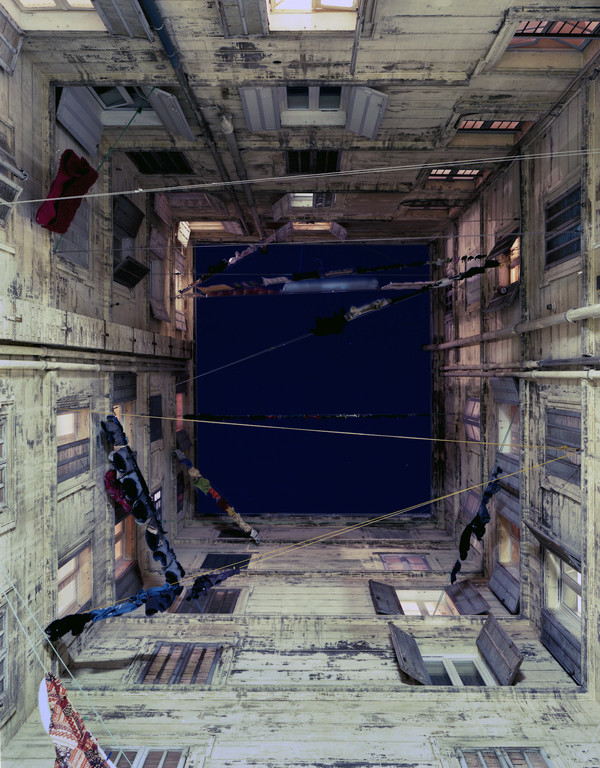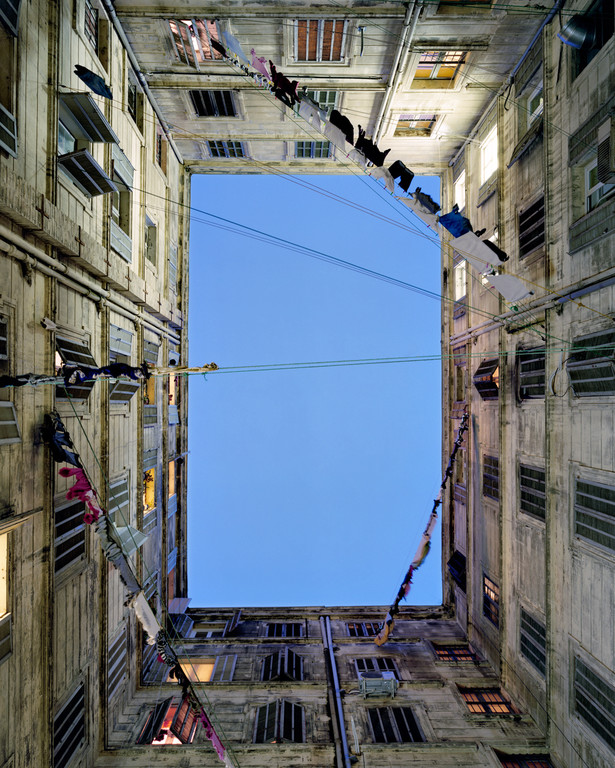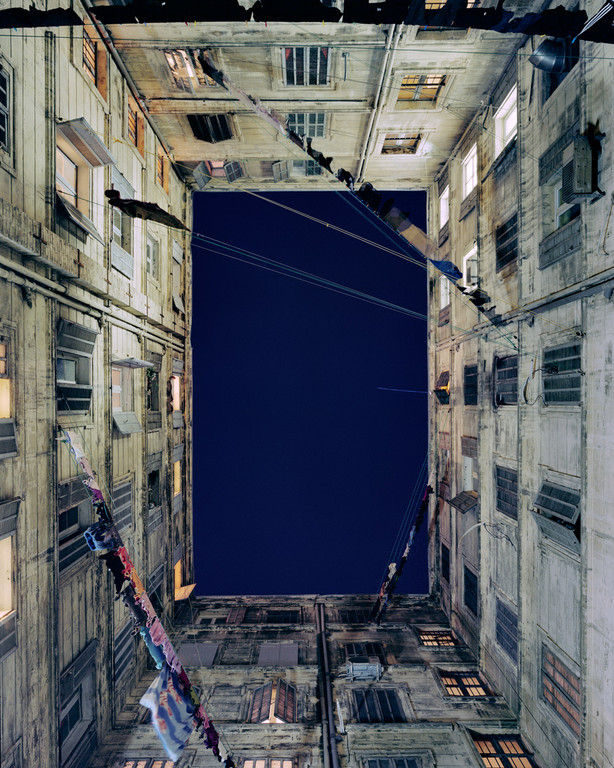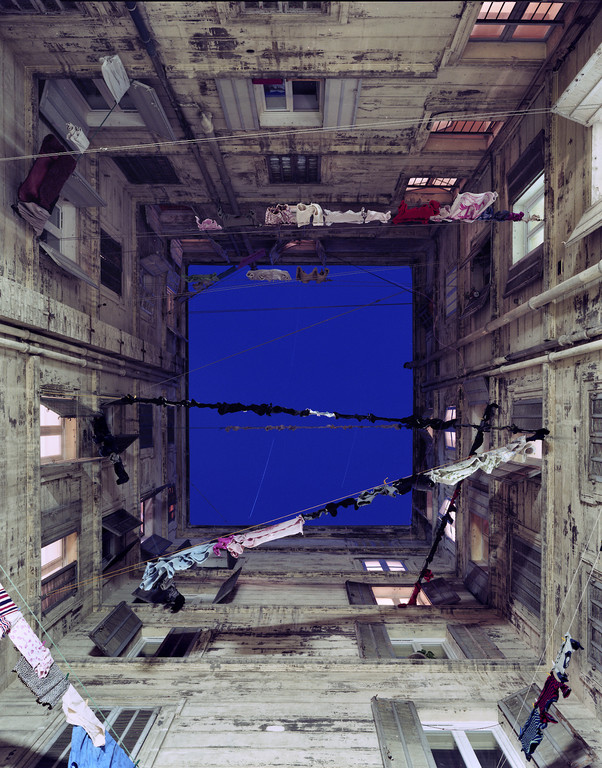OSL contemporary is pleased to announce its first exhibition with Marie Bovo. Her large format photographs of entryways and back courtyards in the French coastal city of Marseilles, are both reality-based and romantic. The pictures are taken in the district between the coastal community, La Joilette and the town of Belzunce- originally an affluent area of Marseilles that, since the 1960’s, has become a poor, immigrant and working-class neighborhood. In keeping with gentrification trends in other European cities, this area is now subject to the strategic acquisition and renovation of the residential buildings, with the resultant price increases and eventual displacement of the current occupants. Originally, the buildings were prestigious town dwellings, built in the late 1800’s, and ornamented with the classical stylistic elements of cornices and imitation columns. As a result of the passage of time and the lack of maintenance, the buildings now reveal tangible signs of wear that bear witness to decay and human presence, opening the door to a story with both artistic and sociopolitical content.
The two series presented at OSL contemporary, Grisailles and Cours Intérieures, are not realistic documentations of social relationships in one of France’s most cosmopolitan and multi-cultural cities, with the sociological challenges that result from having an above-average unemployment rate among the young. The photographs are first and foremost pictures- compositions that balance between simple, formal investigations on the one side, and a sensitive visual study of architecture, on the other. The traces of lives lived on the walls, the laundry hanging to dry on cords that carve patterns of straight lines over the pictures’ surface, are still a reminder of the world outside the pictorial or architectural frame, a world that doesn’t let itself be overshadowed by the images’ aesthetically appealing, painterly surfaces and geometric dynamism.
Taken together, Grisailles and Cours Intérieures create a complex picture where the link between sober registration and aesthetic beautification imparts a universal meaning to a specific geographical place. Architecture forms a frame around different conditions of life at different times in history. However, Bovo’s pictures are, without exception, devoid of people. The tangible, physical nature of the buildings is contrasted with the absence of their inhabitants, creating an abstract and poetic atmosphere where form meets ruin, and where the triviality of newly-washed laundry and peeling paint is given a heightened aesthetic with references to the core tenets of European art history.
“Grisaille” means grey, and is a concept used in art history for paintings that are confined to tones of grey. The Old Masters, for example, employed grisaille in frescoes, or as the under-painting of an image before they applied the essential colors in layers of over-painting. Bovo has gone into the entryways of the buildings and pointed the camera towards the ornamented and grey-toned walls where the paint has long ago faded and cracked. The vertical wall structures create a perspectival tension that draws us deeply into the grey surfaces, which, in their uneven paint and texture, resemble remote deserts. The view is even more atmospheric in the series Cours Intérieures, where Bovo proceeds a few meters further into the architectural landscape; into the back courtyards where grey ceiling surfaces are replaced by the view upwards towards the sky, capturing the day’s shifting light and colors. Cours Intérieures recalls everything from James Turrell’s illusionistic outdoor installations where daylight is the central element, to baroque ceiling paintings with legions of angels filling the voidhere prosaically represented by lines of laundry hung out to dry. Grisailles and Cours Intérieures remind us of the potential beauty to be found in the dilapidated and commonplace components of life. Bovo’s photographs capture a transience that can be interpreted both aesthetically and politically, as they also bear witness to the shifting and tragic fate of the inhabitants behind the buildings’ walls.
Marie Bovo (b 1967) lives and works in Marseille. Her work has recently been shown at the Palazzo Zenobio as part of the 54th Venice Biennale, the Maison Européenne de la Photographie in Paris, the Centre de Création Contemporaine in Tours, Luìs Serpa Projectos in Lisbon, the Collections de Saint-Cyprien, the Maison de la Photographie in Toulon, the City of Marseille Ateliers, the Musée d’Art Contemporain in Marseille, the Caszuidas Screen in Amsterdam and the Federation Square in Melbourne.
